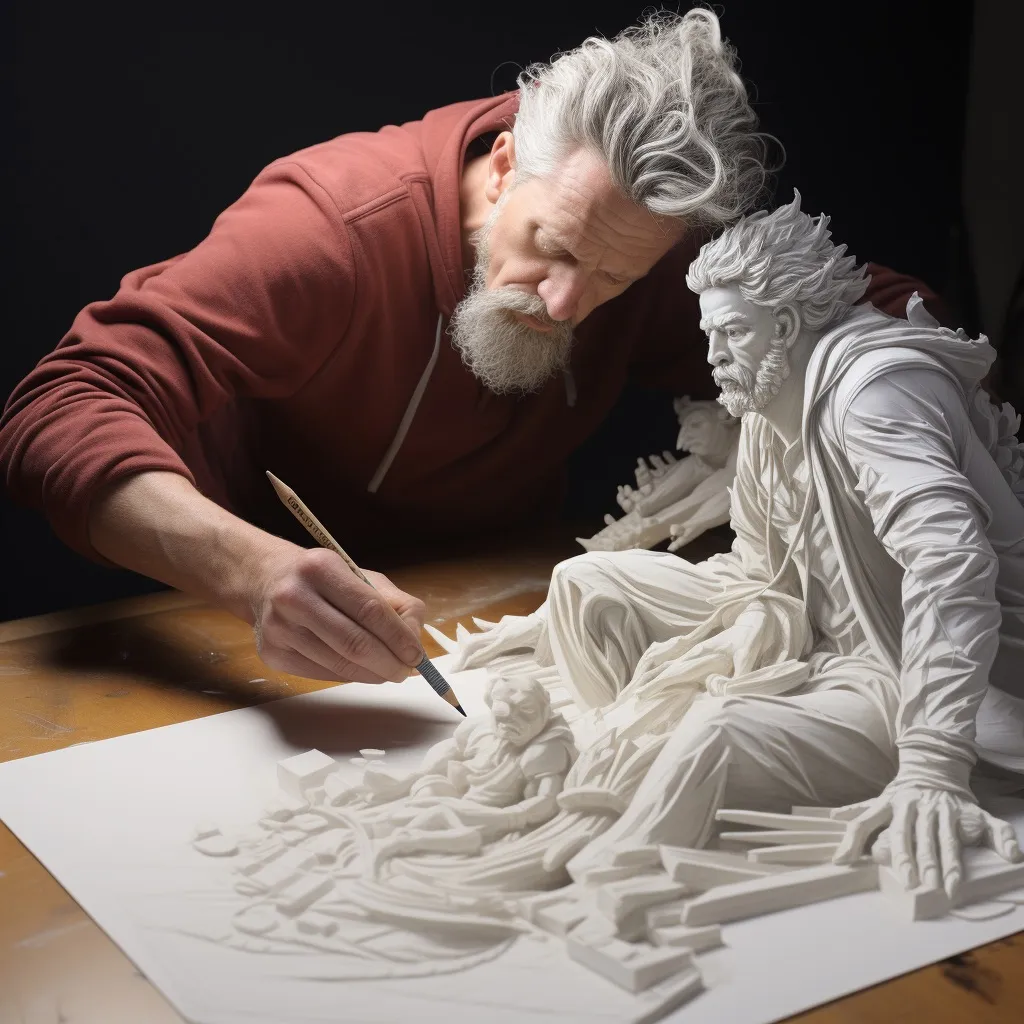
In an extraordinary fusion of traditional artistry and futuristic technology, the image before us challenges the boundaries of creative expression. Here we witness an artist deeply engrossed in his work, but this is no ordinary piece. The lines between artist and artwork blur as the figure on the canvas appears to emerge into our reality, questioning the very nature of art itself.
This scene encapsulates the exciting journey art has embarked upon in the age of AI. With algorithms learning to mimic the intricacies of human creativity, we find ourselves at the cusp of a new era where the digital and physical realms intertwine seamlessly. The artist’s focused expression and the three-dimensional aspect of his creation symbolize the depth and realism that AI can achieve, complementing human skill.
As AI continues to evolve, it offers artists a vast new palette of possibilities. The technology can simulate intricate details that push the envelope of what’s achievable, allowing artists to explore realms beyond the constraints of traditional mediums. This harmonious collaboration between human imagination and machine precision could redefine the art world, expanding both the horizon of artistic capability and the audience’s experience.
This image serves as a metaphor for the burgeoning relationship between artists and AI—a synergy that doesn’t replace the artist but instead enhances the scope of their canvas. It invites us to ponder on the future of art, a future where AI could become the brush, the chisel, or the pen that works in tandem with the artist’s hand to create not just art, but an experience.
The essence of this union lies not in the fear of replacement but in the celebration of augmentation. As we navigate this new frontier, we may discover that AI is less about artificial intelligence and more about augmenting imagination, enabling us to reach new heights of artistic expression.
Have a great week
Image created in midjourney with own written prompt